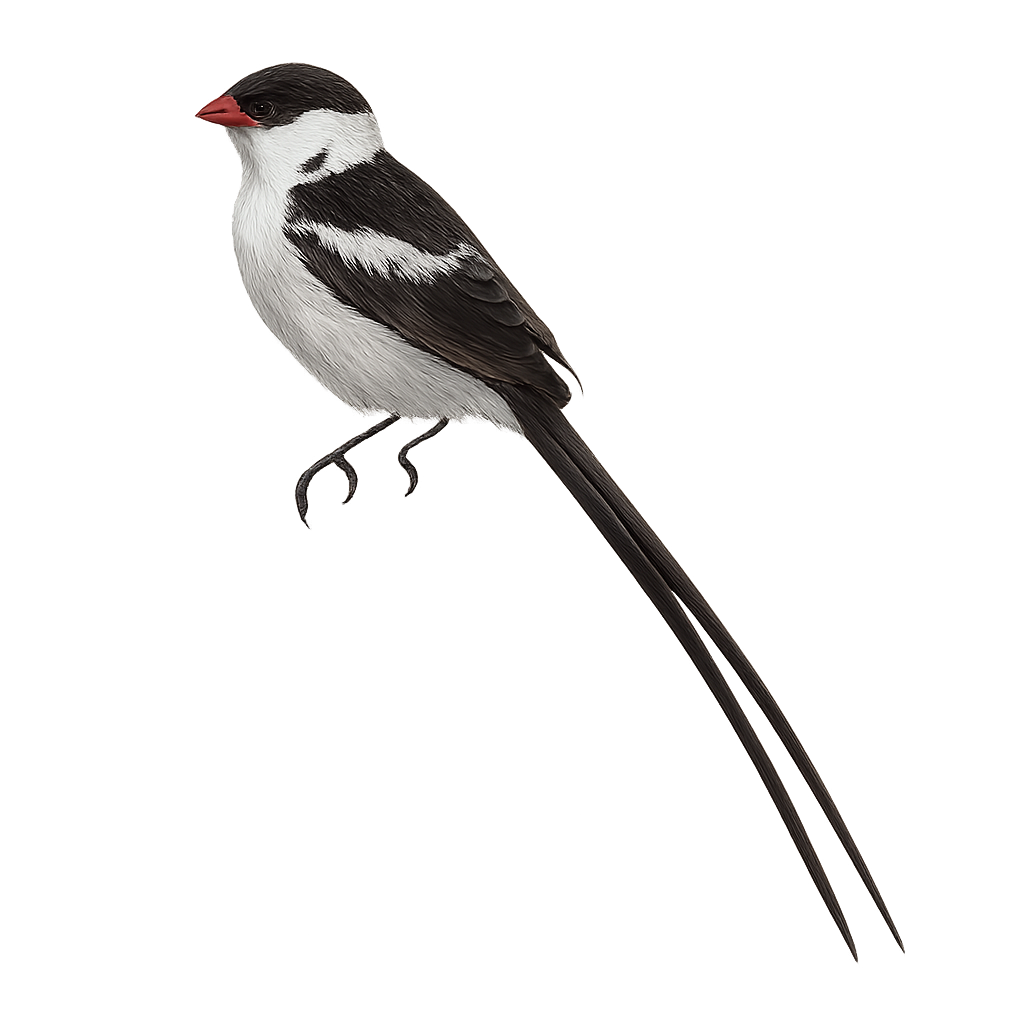Your wildlife photography guide.
Explore the pin-tailed whydah in detail, study its behavior, prepare your shots.
Where to observe and photograph the pin-tailed whydah in the wild
Learn where and when to spot the pin-tailed whydah in the wild, how to identify the species based on distinctive features, and what natural environments it inhabits. The WildlifePhotographer app offers tailored photography tips that reflect the pin-tailed whydah’s behavior, helping you capture better wildlife images. Explore the full species profile for key information including description, habitat, active periods, and approach techniques.
Pin-tailed Whydah
Scientific name: Vidua macroura

IUCN Status: Least Concern
Family: VIDUIDAE
Group: Birds
Sensitivity to human approach: Suspicious
Minimum approach distance: 5 m
Courtship display: December to February
Incubation: 12-14 jours
Hatchings: December to March
Habitat:
Savannas, grasslands, agricultural areas
Activity period :
Primarily active during the day, with peak activity in the morning and late afternoon.
Identification and description:
The Pin-tailed Whydah, Vidua macroura, is a bird from the Viduidae family, recognizable by the male's long, slender tail. Native to sub-Saharan Africa, it is often found in savannas, grasslands, and agricultural areas. The male displays distinctive black and white plumage, while the female is more subdued with brownish tones. This bird is a brood parasite, laying its eggs in the nests of other species, primarily waxbills. The Pin-tailed Whydah is known for its spectacular courtship displays, where the male showcases his tail to attract females. Although not very shy, it remains cautious around humans.
Recommended lens:
400 mm – adjust based on distance, desired framing (portrait or habitat), and approach conditions.
Photography tips:
To photograph the Pin-tailed Whydah, it's advisable to use a telephoto lens of at least 400mm to capture the details of its plumage and long tail. Opt for early morning or late afternoon hours to benefit from soft lighting. Be patient and discreet, as this bird, though not very shy, remains cautious. Observing its courtship displays can provide unique opportunities for dynamic shots.
The WildlifePhotographer App is coming soon!
Be the first to explore the best nature spots, track rutting seasons, log your observations, and observe more wildlife.
Already 1 429 wildlife lovers subscribed worldwide

